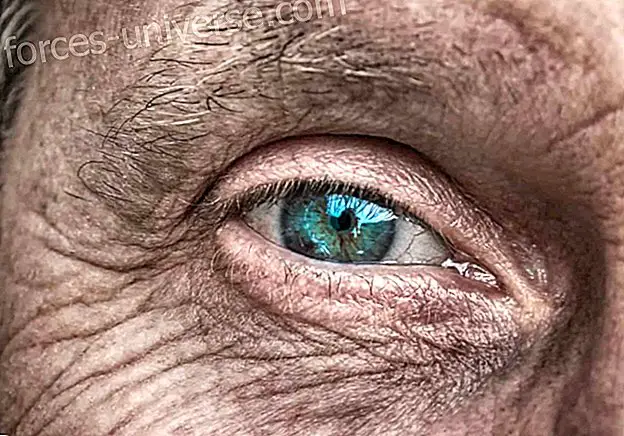
There is much talk about the benefits of drawing them, coloring them or simply observing them, taking it for granted that they are harmless drawings that cannot imply anything counterproductive. Those who have such an attitude are wrong, because yes, they can have unwanted and even annoying effects.
It came to me to address this issue as a result of a person commenting that I would use them in clothing designs.
Uses out of context
Mandalas and yantras, traditionally, in Eastern cultures are NOT USED in clothing. Not because they didn't think about imposing it as fashion. Nor for the "respect" they have, but for understanding better than, doing so, is surely more harmful than beneficial.
Why? Simple.
Both mandalas and yantras, if well done, invite the unconscious to certain energy or mood. The mandalas, rather to harmonize, but RESTING the internal energies. That is, slow down at a leisurely pace.
For its part, the yantras, to focus on certain aspects, especially assets.
And here a metaphor: If we compare or metaphor to the mandalas and yantras as acceleration or brake capacity of parts of a complex machinery such as a vehicle; having in mind a constant view of a mandala, can be like having the parking brake applied, even when we want to accelerate to get ahead of a slower vehicle on the road. If the yantra is a constant in our sight, it would be like having the car's engine accelerated when we go slowly, spending too much stupid fuel. Or how to speed up the playback speed of the audio tape of a song.
Uses in alternative medicine
Both mandalas and yantras have always been considered and prescribed by experts such as antibiotics or medicines to the sick, but in this case for questions of balancing the internal energy, restoring the “appropriate speed” for the personality typology of individuals to which were recommended; or for the area to which it is entered (for example temples). That is, they invite and predispose to specific mood and inner state, which can be combined in their functions or objectives, but not to maintain an optimal mood all the time, since there are always moments in life where it is necessary to “accelerate” and, others, go slower than normal.
Thus, when we have a mandala before our eyes, very frequently, it tends to rest even when we need to accelerate! Whether in circumstances to make better use of time, to overcome something that is like a vehicle that is slower and decreases at our optimum average speed or "cruising."
Even worse if it is in clothes (or talk about tattoos), or in everyday objects of very frequent use, since it invites all those who see it to have a calm attitude. Which can be very shocking for those who need to maintain a very high pace, due to personal circumstances or moments.
With the yantras, the inverse effect: they can alter the nerves, motivate activities of a certain type (accelerate certain psychic energies) when they need to relax or stay well serene.
For this reason, it is that only rare exceptions from the East used or use mandalas or yantras as personal symbols, but that they are like “frequent ornaments” that can omit to look at them, both they and the visitors.
Even so, when they are used as familiar or clan symbols, similar to the shields of the nobility, they have been designed to counteract or balance characteristics and tendencies of that group or family, because each human group tends to have a certain psychic homogeneity and emotional, both in virtues and defects. Precisely to balance the group, it is that from time to time you can discover mandalas or yantras that are “of the clan” or “family” that are repeated with frequencies in different environments, but without saturating.
The medical axiom says well: “A drop of poison heals. Two kill. ”
A very prestigious psychologist and writer (more precisely Edward De Bono, very popular for creating the term "Lateral Thought" and "NLP - Neurolinguistic Programming"), wrote to the book "Six hats to think" (it is a link to a site that gives synthesis ) that explains and teaches a technique that was "very novel" for greater intellectual and emotional performance, but is also very relative and questionable (in its form rather than background). It is based on how we encourage or predispose certain colors for more or less performance in what we do. The technique lies in just imagining that we put on a hat with the optimum color for greater efficiency in what we must do, a couple of minutes before embarking on the task in question, asserting that the results are "wonderful."
His technique has valid foundations, although not everything he exposes is correct, as well as incomplete. However, it serves to illustrate as an example of how much it would bother others who have different activities, to see hats with colors contrary to what suits them (if they were visible hats, instead of the imaginary ones suggested by De Bono). Well, it is the same with mandalas and yantras, they can result as gentle agitation of red rag before nervous bulls. Or as asporifers for those who try to pay attention and concentrate on something that interests them (according to designs and colors). In De Bono's hats, in addition to the fact that no one sees it, one can take them off to exchange them for others or forget that he imagined them put on. A mandalas and yantras it is not so easy to stop seeing them in everyday clothes or objects when they are even contrary to the intention we can have and adequate mood at the time and circumstance.
Conclusions of its use
That is why these designs are not to be taken lightly. Much less to "impose" specific designs in the eyes of others, just because they are close or dealing with us. They are very personal symbols in general, or for very specific attitudes and attitudes. It is best to recognize which designs (and then, as a second step, their colors) are the ones that best suit each mood or internal state, because ultimately, some are stimulants such as coffee and, others, sedatives such as certain kinds of herbs. Who drinks coffee when they need to be able to sleep? Or sedative tea when you need to unwind?
Think about it! Measure it, reflect and draw your own conclusions that, perhaps, I am the wrong one and all or good parts of what I exposed is not more than a nonsense or full of conceptual errors.
All kinds of symbols and graphs mainly act as detonators of associations in the unconscious.
Therefore, if the eye does not perceive it (or did not perceive it before and remember that it is there), it does not have any kind of effect.
That is: if a person entered as a thief in your home to place a symbol under the mattress of your bed, be it a mandala or one of the spellings of the popular reiki and not nor do you find out that there has been that symbol? NO ONE will be affected in any way by it.
It is more: the symbols of reiki (or pawns and others) are only effective with people who fully understand these specific ideograms. Not with the westerners who were informed of what `` what '' means and what the symbol is supposed to achieve, except for the exceptions in which it acts with the same effect as any placebo .
Sometimes it's even the other way around: if you put hidden behind a box a symbol that for another person is very important and sees you placing it, although then remove it from there without the person who saw you placing it know that you have removed it, the unconscious of that person will continue assuming that he is there and then continue The effect is unconscious until he finds out that the symbol or image hidden behind the painting is no longer there.
In short: all kinds of spelling and symbols (mandalas and yantras especially) detonate unconscious associations. If the unconscious does not perceive them (by what it captures the view, although consciously does not take it into account) or does not know that est n (If it did not see them placed and they are hidden) How will I evoke them and motivate them to internal reactions?
On the other hand, too many people incur the magical superhero to consider that something has magical power, just BECAUSE THEY BELIEVE IN IT. Case of countless people who thought they had a splinter of the cross in which Jesus was crucified and that it protected them in countless situations Y And the splinter was not even of the same kind of wood with which the Romans made the crosses! (Like saying splinter of quebracho, American tree, instead of oak that is very European).
Thus, countless medallions, talismans, rings, prints, etc. have power only because people believed it and, in fact, it was their own conviction. which facilitated that "magic" or "miracles" exist. But explaining how "magically" works the conviction in some object is a very long issue, because of the number of factors that can be concatenated to effectively do so. Each case must be analyzed in a timely manner, because they are not always the same factors or "miracles" or "magic".
SOURCE: http://centaurea.cultureforum.net/t2219-el-riesgo-de-usar-mandalas-y-yantras
WHAT IS A YANTRA ?: http://serconcientes.blogspot.com/2011/02/que-es-un-yantra.html






